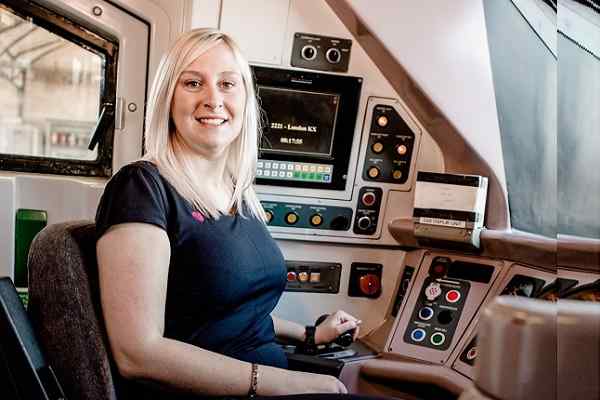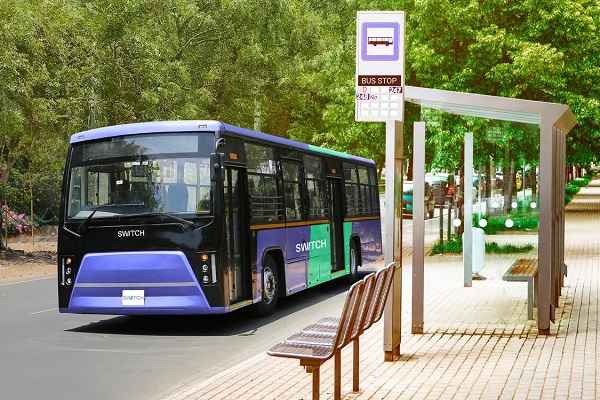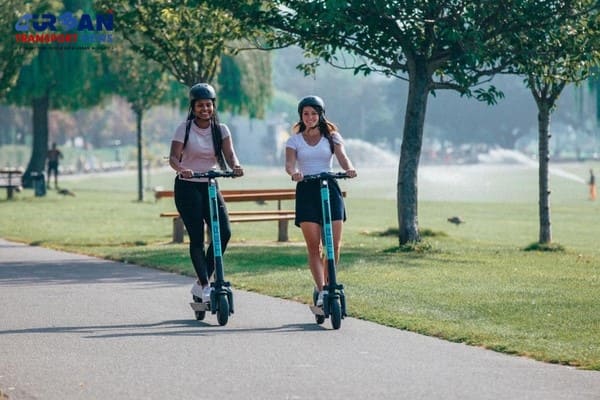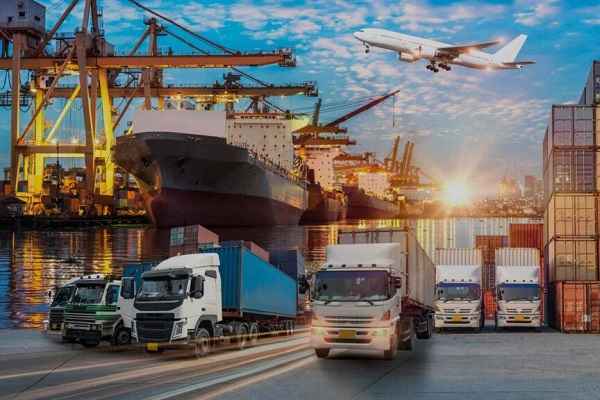 How Weigh-in-Motion Systems Are Revolutionizing Freight Safety
How Weigh-in-Motion Systems Are Revolutionizing Freight Safety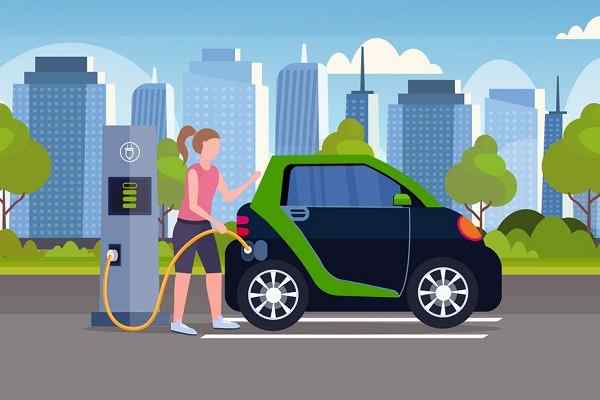 Women Powering India’s Electric Mobility Revolution
Women Powering India’s Electric Mobility Revolution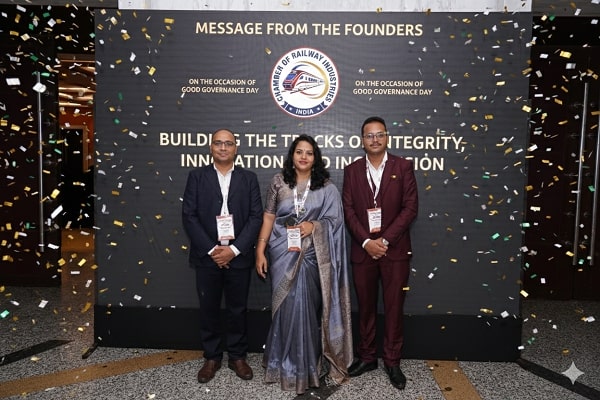 Rail Chamber Launched to Strengthen India’s Global Railway Leadership
Rail Chamber Launched to Strengthen India’s Global Railway Leadership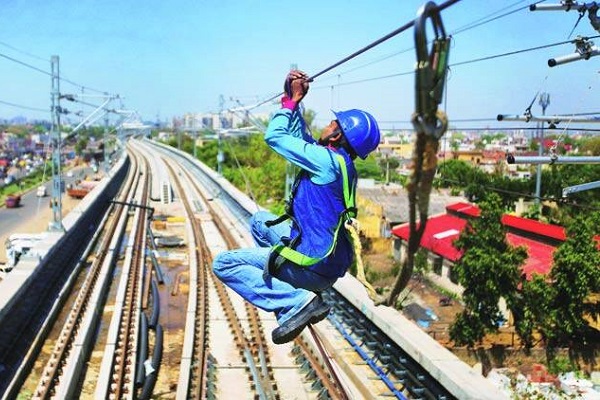 Wage and Hour Enforcement Under the Massachusetts Wage Act and Connecticut Labor Standards
Wage and Hour Enforcement Under the Massachusetts Wage Act and Connecticut Labor Standards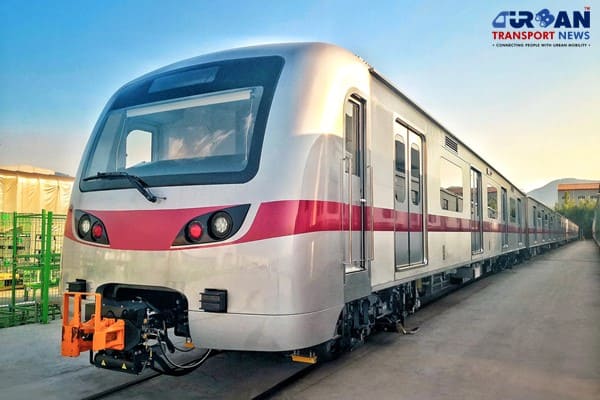 MRT‑7: Manila’s Northern Metro Lifeline on the Horizon
MRT‑7: Manila’s Northern Metro Lifeline on the Horizon Delhi unveils ambitious Urban Mobility Vision: Luxury Metro Coaches, New Tunnels and Pod Taxi
Delhi unveils ambitious Urban Mobility Vision: Luxury Metro Coaches, New Tunnels and Pod Taxi Qatar approves Saudi Rail Link Agreement, Accelerating Gulf Railway Vision 2030
Qatar approves Saudi Rail Link Agreement, Accelerating Gulf Railway Vision 2030 UP Govt plans to introduce Water Metro services in Ayodhya, Varanasi & Prayagraj
UP Govt plans to introduce Water Metro services in Ayodhya, Varanasi & Prayagraj India’s First Urban Ropeway begins Trial Run in Varanasi, Set to carry 1 Lakh passengers daily
India’s First Urban Ropeway begins Trial Run in Varanasi, Set to carry 1 Lakh passengers daily India and Bhutan to Build First-Ever Rail Link: ₹4,033 Cr Project to Boost Regional Connectivity
India and Bhutan to Build First-Ever Rail Link: ₹4,033 Cr Project to Boost Regional Connectivity
Study on accessibility of Indian public transport systems for differently abled persons
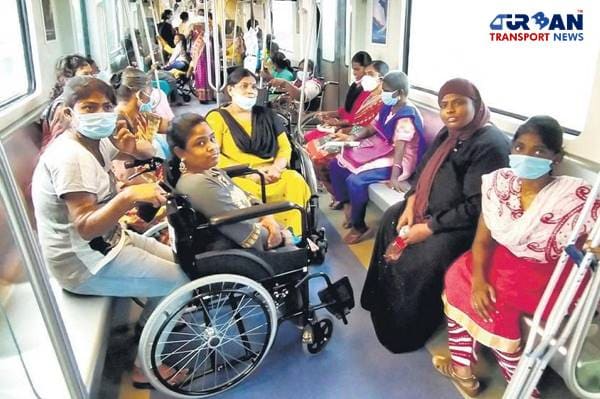
Accessibility for persons with disabilities extends beyond physical or mobility impairments. Persons with visual or hearing impairments may also face challenges when using public transportation, such as difficulty reading small signage or hearing announcements. To ensure inclusive and accessible public transportation for all persons with disabilities, it is essential to consider a range of accessibility needs.
Improving accessibility in public transportation is an on-going process that requires a holistic approach that takes into account the diverse needs of persons with disabilities. This can involve providing audio announcements or alternative formats for signage, ensuring clear sightlines and lighting for visually impaired passengers, and offering accessible communication channels for passengers who are hearing impaired. Furthermore, involving persons with disabilities in the design and development of accessible transportation solutions can help ensure that solutions are tailored to the specific needs of different disability groups and are effective in promoting greater accessibility and inclusion.
The characteristics of physical and mobility impairments involve many things, are detailed below:
- Persons with physical and mobility impairments may experience deficits in motor or fine motor functioning, locomotor and non-locomotor functioning.
- There is the potential for deficits in cognitive, social, and adaptive behavior skills, as well as impairments in language, vision, hearing or other sensory areas.
- Persons with physical and mobility impairments may experience stiffness or spasticity, as well as loss of muscle strength. They may need help with learning, or activities of daily living.
- Persons with physical and mobility impairments may need assistance with mobility, transfers, and ambulation.
The accommodations and respective assisting technology for people who have mobility or physical disabilities include are detailed below:-
Accommodations for Physical disabilities
- Wheelchair ramps
- Grab bars
- Accessible passageways
- Accessible parking
- Accessible digital content
The Assistive Technologies for Physical disabilities
- Wheelchairs
- Crutches, Walkers
- Joysticks
- Head pointers
- Trackballs
- Eye- or head-trackers
- Augmentative and alternative communication (AAC)
The Global statistics data for differently-ables are given below:
Approximately 15% of the world's population is affected by disabilities in varying degrees, and this number is expected to increase as the population ages. Additionally, around 750 million people - equivalent to the entire population of Europe - struggle with reading and/or writing. Unfortunately, despite efforts to reduce this number, 80% of people with disabilities who wish to work remain unemployed.
Accompanying the disabled
In accordance with the United Nations Convention on the Rights of Persons with Disabilities, it is mandatory to make transportation accessible to those with disabilities, allowing them to fully participate in society on an equal footing with others. To facilitate mobility for disabled individuals, public transportation facilities should be designed to meet the following criteria:
- Adapted to accommodate people with diverse abilities
- User-friendly and easy to understand, regardless of the user's experience, knowledge, or language skills
- Able to communicate necessary information effectively, regardless of the user's sensory abilities
- Designed for efficient and comfortable use with minimal fatigue
- Provides sufficient space and appropriate size for approach, reach, and manipulation.
- By adhering to these guidelines, we can make a positive impact on the lives of those with disabilities, enabling them to enjoy the same freedoms and opportunities as everyone else.
United Nations Economic & Social Affairs Disability Department defines in its Article 20 for Personal Mobility.
The United Nations Economic & Social Affairs Disability Department has outlined the rights of persons with disabilities in two key articles. According to Article 20 for Personal Mobility, federal institutions must take effective measures to ensure personal mobility with the greatest possible independence for persons with disabilities. This includes facilitating their personal mobility in the manner and at the time of their choice, and at an affordable cost. Access to quality mobility aids, devices, assistive technologies, and forms of live assistance and intermediaries should also be made available at an affordable cost. Moreover, federal institutions should provide training in mobility skills to persons with disabilities and to specialist staff working with persons with disabilities. Lastly, they should encourage entities that produce mobility aids, devices, and assistive technologies to take into account all aspects of mobility for persons with disabilities.
United Nations Economic & Social Affairs Disability Department
In Article 21 - Freedom of Expression and Opinion, and Access to Information, the United Nations Economic & Social Affairs Disability Department mandates that federal institutions take all appropriate measures to ensure that persons with disabilities can exercise the right to freedom of expression and opinion, including the freedom to seek, receive, and impart information and ideas on an equal basis with others through all forms of communication of their choice.
This includes providing information intended for the general public to persons with disabilities in accessible formats and technologies appropriate to different kinds of disabilities in a timely manner and without additional cost. Additionally, federal institutions should accept and facilitate the use of sign languages, Braille, augmentative and alternative communication, and all other accessible means, modes, and formats of communication of their choice by persons with disabilities in official interactions. Private entities that provide services to the general public, including through the internet, should be urged to provide information and services in accessible and usable formats for persons with disabilities. The mass media, including providers of information through the internet, should also be encouraged to make their services accessible to persons with disabilities. Lastly, federal institutions should recognize and promote the use of sign languages. By following these guidelines, federal institutions can promote the rights and inclusion of persons with disabilities and help them exercise their freedom and independence fully.
Lecco Declaration (ITALY) on 12 July 2022
The Lecco Declaration, which was issued on July 12, 2022, provides a critical framework for improving the implementation of accessibility and supporting the realization of accessible public transport. The declaration's importance lies in its emphasis on the user, and not just on those with reduced mobility. According to the declaration, "we are doing this for everyone.
The core concepts of the Lecco Declaration:-
- Freedom of movement is a human right and personal mobility should be guaranteed to all.
- Mobility is related to other rights such as participation, access to education and employment.
- Public transport supports social and environmental policies and values. It connects places and people and fosters social and economic development. Everyone should be able to use it.
- Technological developments have the potential to reduce or overcome access barriers providing new solutions.
The Lecco Declaration outlines eight key principles that should be followed to achieve accessible and inclusive public transport:-
- Accessible mobility means enabling all passengers to travel independently through adapted infrastructure, digital services and human assistance
- Barrier free mobility is a priority for sustainable transport modes
- The passenger experience is central to accessible mobility policies
- Technology to overcome accessibility barriers drives innovation in the transport sector
- All stake holders are involved in the dialogue from the beginning
- New Mobility projects respect all relevant regulation that supports accessibility and follows universal design principles
- Accessibility training is integral part for transport professionals
- Good practices are shared and technology transferred is encouraged internationally to support replication.
Public Transport is a sustainable and safe mode of transportation that benefits society as a whole by promoting social cohesion, accessibility, climate change, health policies, and more. It contributes to economic development, employment opportunities, and connects people and places. Transportation policies are especially important for those with disabilities, as transportation barriers can significantly impact their daily lives. Therefore, public transport should ensure that every person on Earth has the mobility they need to lead their lives, from work and leisure to visiting family and accessing medical care. The most pressing issue facing public transport today is ensuring it is inclusive and accessible for people with different levels of abilities.
As urban mobility is crucial for the wealth creation and social development of cities, everyone should have access to public transport. Facilitating mobility requires removing barriers and designing transportation systems that are accessible, safe & affordable and provide choices for all. The challenge is not simply to respond to the needs or rights of a specific group, but to provide services in a manner that ensures access to economic and social opportunities for all citizens, regardless of their condition or financial means. Public transport must identify key actions for making new mobility solutions affordable, accessible, and safe for all passengers, including those with individual access needs arising from a disability. It is essential that mobility is available and affordable for all, including those living in rural and remote regions that may face additional challenges in accessing public transport due to reduced mobility or disabilities.
One wheelchair-dependent individual's experience with Indian Railways highlights the inconvenience faced by differently-abled persons. Most stations have stairs to access platforms, which are not wheelchair-friendly. The entrance door of trains is too small and high, making it challenging for coolies to lift wheelchairs with the person sitting in it. The seating area is also congested and uncomfortable, making it difficult to adjust oneself even for sitting or lying down. The space between the seats in a bougie is inadequate to park a wheelchair. The bathroom facilities on Indian Railways are also not user-friendly for differently-abled individuals.
In contrast, western countries have made significant progress in providing excellent facilities for differently-abled passengers. Stations in Europe and North America have automated doorways with scanners, ramps, escalators, elevators, and luggage escalators that are easy to use and accessible. Additionally, facilities such as ATM machines, ticket vending machines, toilets, restaurants, book stalls, souvenir shops, and consumer durable shops are all designed to cater to the needs of physically challenged passengers.
It is crucial to consider the needs of differently-abled people and provide them with the necessary facilities to help themselves. While some individuals are born differently-abled, others may become so due to fate. Therefore, it is essential not to make them feel different in every corner of the country. The government can take inspiration from western countries to improve the infrastructure of public transport and make it more inclusive and accessible for all passengers.
We are differently abled people by birth or by fate but please don't make us feel different in every corner in this country.
Indian Railways - A Long Way to Go
It is clear that Indian Railways still has a long way to go in terms of providing facilities and infrastructure that are mandatory for physically challenged individuals and that facilitate ease of access and use. Looking at what is done for disabled passengers in other countries can provide a starting point for the things that Indian Railways needs to do as well. These include coaches specifically designed with the needs of physically challenged individuals in mind, with requisite facilities on each train. Handicapped-friendly toilets should have ample room for wheelchairs, with mirrors, shelves, sinks, taps, faucets, flush handles, and latches all accessible and usable by a person seated on a wheelchair. Additionally, western commodes should have disposable, sanitized paper rims.
Flexible stairs that can extend to become a ramp for boarding and alighting wheelchair passengers, ramps, ambu-lifts, room for stretchers, and fully equipped first aid/emergency medical staff on call in such cars are also necessary. Telephone connections in such cars should be strictly for the use of authorized personnel and bona fide physically challenged passengers only. Escalators (horizontal and climbing travelators, or moving walkways) should be wide enough to accommodate wheelchairs, and luggage escalators/conveyor belts should be installed beside every stairway in railway stations.
There should also be separate lines for physically/mentally challenged individuals at railway counters, and uniform height of all platforms in all railway stations in India. On-board crew, including catering staff, should be trained in lip reading and sign language to aid hearing and speech-impaired passengers.
In addition to providing physical facilities and infrastructure, sensitizing society to the needs of differently-abled individuals is critical.
Physically challenged persons Problems facing in Indian Metro Trains
The slippery flooring in the metro presents a significant mobility challenge for people who use crutches. Additionally, ticketing offices and railway route maps are often placed at a higher level, making it difficult for wheelchair users to access them. Parking facilities are also often inaccessible, with users having to park their vehicles at the other side of the station and cross the road, which is a significant challenge for people with disabilities. The gap between the platform and the train is also a serious risk for wheelchair users as their chair casters could dip into it. Furthermore, the separate entry for wheelchair users in stations is almost always locked and is only opened when a user needs it. Other crucial features missing in Indian Metros include sliding doors for accessible toilets, anti-reflecting flooring that contrasts with walls in color to assist people with low vision, and ticket counters with audio induction loops to help those with hearing disabilities.
To truly include people with disabilities in mainstream society, it is not enough to merely deploy volunteers to assist them when needed; it is necessary to provide them with all necessary amenities to make them independent. The failure to do so can have many consequences for a city.
Although much has been done to make the public transport sector more accessible, such as improving metro and pre-metro stations by making them accessible by elevator and removing gaps between trams and platforms, accessibility encompasses much more than ensuring disabled people can access vehicles. For instance, parents traveling with new-borns in strollers or the one in twelve men who have some form of color blindness should also be considered.In India, Metro train authorities are committed to making transport networks accessible for everyone, regardless of their disability, age, or situation. The public transport authorities, especially in the Metro train sector, are making efforts to adapt their transport systems to meet the needs of their passengers. This includes station layouts, vehicle access ramps, deployment of low-floor trams and buses, as well as signage, audio, and touch-sensitive communication channels. To ensure complete autonomy and accessibility for people with disabilities, Indian Metro Train authorities should plan and implement mobility services that are 100% accessible and fully adapted. Direct access from the platform, guide rails, and tactile paving, along with passenger information in Braille and audio-visual station announcements, are just a few examples of ways to make travel accessible for everyone.
In the US, Para-transit services are digital and utilize 3,500 vehicles in over 50 cities from San Francisco to Baltimore. Indian Public Transport authorities should also develop their own reservation app for their passengers, using their own software layer for trip optimization for non-emergency medical transportation services. By providing accessible transport options, we can ensure that everyone, including those with disabilities, can travel independently and safely, contributing to a more inclusive and accessible society.
Bus
The bus sector plays a critical role in promoting sustainable economic growth and equal opportunities. Leaders must strike a balance between investing in the sector and ensuring its long-term financial sustainability. It is now imperative to make public transportation accessible and inclusive for all and to reduce carbon emissions and pollution, which have become central to public transport and urban planning for the future.
Bus travel is undergoing a revolution, with new technology incentivising passengers and supporting sustainable transport goals.
Low-floor buses improve the accessibility of public transportation, especially for elderly and disabled passengers, including those using wheelchairs and walkers. One-level boarding is enabled by the use of low-floor buses, allowing passengers to get on and off the bus with ease. The central corridor of the bus is free from platforms and steps, allowing passengers to move quickly.
Physically challenged persons require specific facilities when traveling on buses, including the lowering (kneeling) of the entrance side of the bus by several inches to provide a shorter first step into the vehicle, particularly if they are boarding from a curb. Additionally, mechanical lifts at the entrance to the bus are necessary for those who cannot climb stairs, including those in wheelchairs.
Providing these facilities within buses and bus stops requires significant investment in transport infrastructure. Infrastructural barriers are the most limiting barriers, making independent travel impossible for many. While assistive equipment can help mitigate inaccessible design, removing structural barriers is crucial in the long term.
The need of the hour is to make public transportation sustainable by adopting green technologies, which can reduce emissions and improve air quality. For example, electric and hybrid buses can be introduced, and old buses can be retrofitted with cleaner engines. Priority lanes for public transport and bicycle infrastructure can be added, encouraging people to take public transport instead of driving their cars. Furthermore, an inclusive and accessible public transport system is crucial for the well-being and mobility of persons with disabilities, older adults, and those with limited mobility. Priority seating, low floors and wheelchair ramps are just a few of the features that can be implemented to make public transport more inclusive.
Key takeaways
Improving the accessibility and usability of public transport systems in the short- to middle-term for differently-abled persons requires the following actions:
- Broaden the definition of “accessibility” to include individuals with any kind of impairment, whether permanent or temporary.
- Ensure collaboration between integrated transport and urban planning to design accessible door-to-door routes.
- Conduct public campaigns to improve social attitudes and transport etiquette towards persons with disabilities and access needs.
- Make the participation of disability/accessibility experts mandatory for the development of standards for vehicles, mobility systems, and transport services.
- Coordinate urban public transport with suburban and regional transport to provide smooth transitions for travellers with and without disabilities.
These actions will help to create a more inclusive transport system that meets the needs of all passengers, regardless of their abilities. By working together and making accessibility a priority, we can ensure that public transport systems are accessible, convenient, and reliable for everyone in India.
Conclusion
In conclusion, ensuring accessibility and inclusion is crucial for upholding the right to freedom of movement and personal mobility for all individuals. The United Nations Convention on the Rights of Persons with Disabilities mandates that federal institutions facilitate personal mobility for individuals with disabilities in a manner and at a cost that is affordable and of their choice. By prioritizing accessibility and involving individuals with disabilities in the design and development of transportation solutions, we can work towards creating a more inclusive and equitable society. Accessibility is a critical component of public transport, which plays a vital role in creating sustainable cities. To achieve better accessibility, a consortium of user networks, public transport organizations, assistive technology experts, and municipalities must collaborate. With the support of all stakeholders in the public transport sector, we can provide accessible and sustainable mobility services to individuals with disabilities, ensuring that everyone can benefit from them. Let’s all work together to ensure that everyone is on board in improving public transport accessibility.





